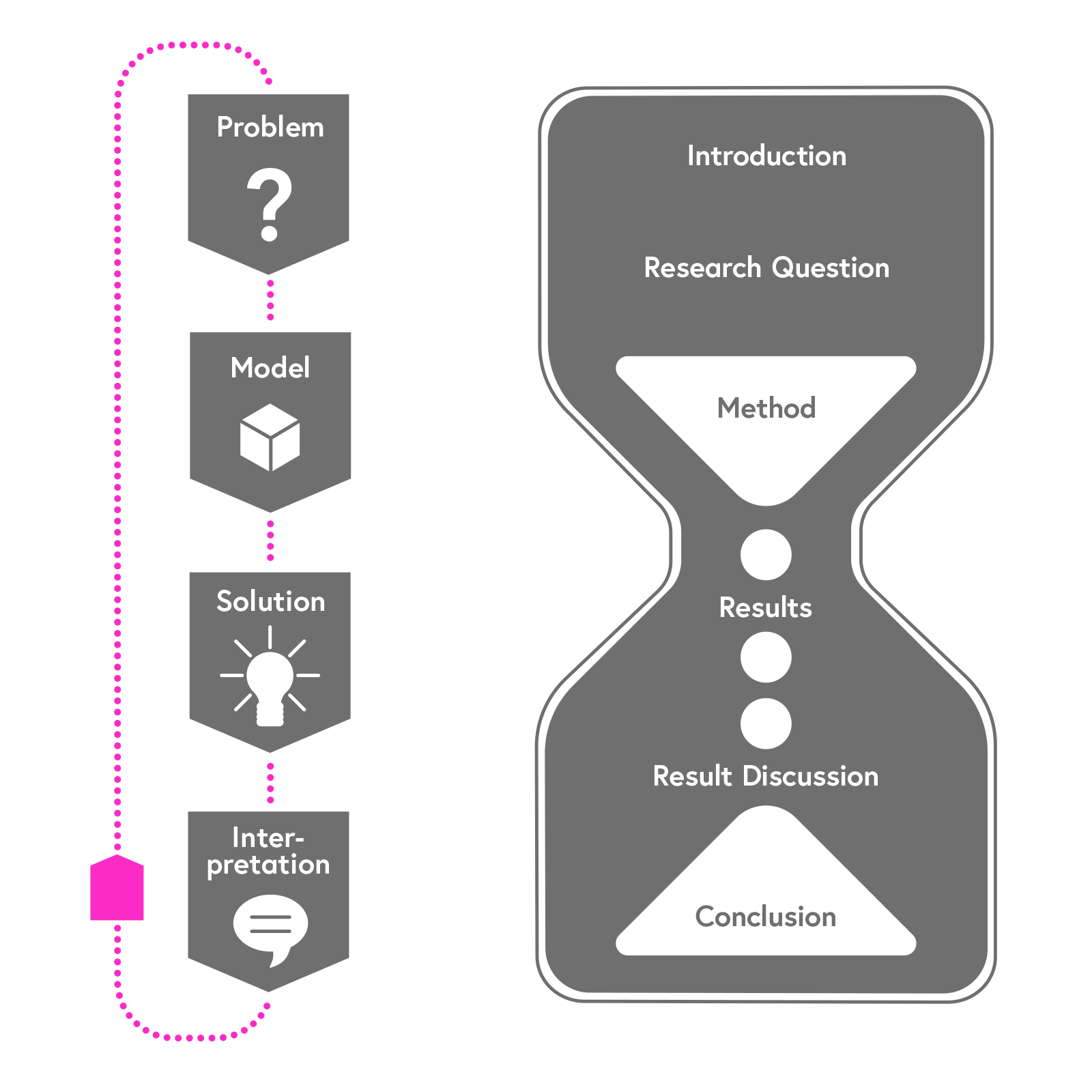PUTTING THE PIECES TOGETHER TO LOOK INTO THE FUTURE
5.10
From story to paper
Let’s shortly look a bit more closer at how to transfer your model into a consistent story.
As explained in the last step you can use the four phase structure presented in this course as a good guide on how to arrange your story. This structure also nicely lines up with the general hourglass structure of paper writing:

You should always start and end broadly to ensure a consistent frame for your story and make it accessible to a wide audience. Motivate your research so that anyone understands why this is interesting. Provide a clear research question (your ‘Problem’) and relate it to existing research and approaches thereby becoming more specific. In a classical paper, those are the ‘Introduction’ and ‘Literature Review’ sections.
Your ‘Model’ and ‘Solution’ methods are the most specific parts and should provide sufficient detail for others to reproduce your work. They correspond to the ‘Method’ section within research papers. Those are the parts where you need to convince other modellers that your model is only wrong because it is a model and not a bad model. So make sure to provide a clear outline of your model design, assumptions, and simplifications.
With your results, you again broaden the scope. Usually, you first present your main findings followed by a discussion and interpretation. The ‘Interpretation’ will need to provide the link from your specific methods and results to the general problem you introduced. The conclusion will then close your story and should again be written in a way that anyone can understand what you have done.
Make sure that you provide your readers with all the elements they need to follow your story and try to avoid opening up side-stories that distract from your main story-arch. A good way to learn how to write understandable papers or reports is examining good examples. So, whenever you find a reference you like, and consider good in getting its message across, check how they structured their story.
Recommended readings
If you want to have some more guidelines on how to write a consistent research paper you may want to have a look at one of the following references.
Bem, D. J. (2003). Writing the empirical journal. In: Darley, J. M. et al. (Eds) (2003). The Compleat Academic: A Practical Guide for the Beginning Social Scientist, 2nd Edition. Washington, DC: American Psychological Association.
Nikolov, P. (2013). Writing tips for economics research papers. Harvard University.
Varian, H. R. (1997). How to build an economic model in your spare time. The American Economist, pp. 3-10.
